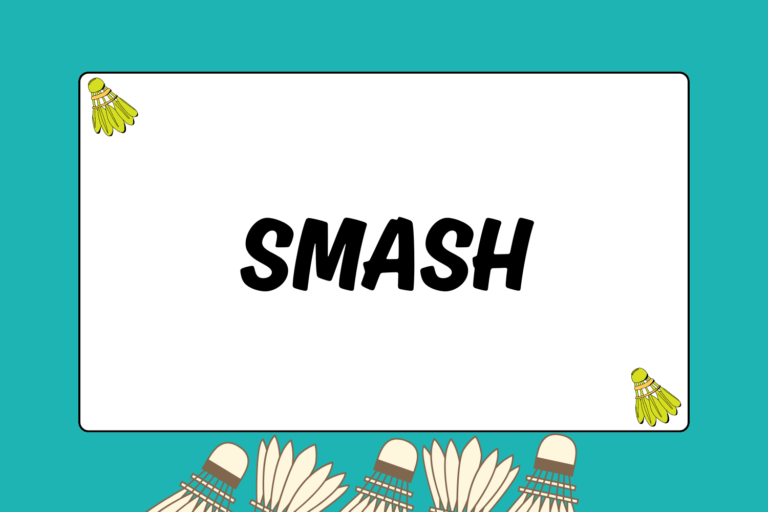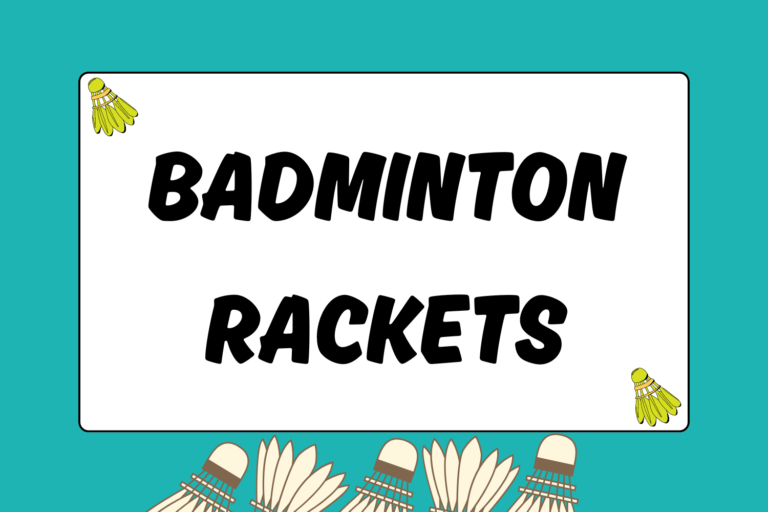Mixed doubles is the only badminton event that allows a male and female to compete together. Playing with the opposite sex can present a unique challenge.
This guide will go over the three basic approaches to mixed doubles. Read carefully, as each approach has certain advantages and disadvantages.
Mixed Doubles Rules
The general rules of mixed doubles are the same as those for men’s or women’s doubles.
One thing that tends to differ is the positioning of the players during the serve. Normally, the male will serve two to three steps behind the short service line, with the female crouched in front. This allows mixed teams to be in their attacking position at the start of a rally.
Traditional Mixed Style
Most mixed teams use the traditional approach, which has the male cover the back half of the court while the female covers the front. This is also known as the offensive front-back formation used for doubles. For this style, you and your partner will remain in these positions during the majority of the rallies. The female should:
- Cut off any drives that are low enough for her to block or drive back
- Cover drops that land near the front two corners
- Kill any slow, high-arching shots that land in the front half of the court
Meanwhile, the male should:
- Cover the middle area along the left and right doubles sideline
- Attack any clears by dropping or smashing
- Return smashes with drops or deep, high-arching clears
These responsibilities are important because each partner is making the game easier for the other.
Cross-court drives can be problematic for the male, but the female should be in a position to cut them off easily.
On the other hand, playing in the front will make it difficult for the female to return smashes. For the most part, that responsibility goes to the male.
An unavoidable drawback of playing this style is that it leaves you vulnerable defensively.
Hot Tip: Put Them Out of Position
Traditional mixed teams play with the male in the back and the female in the front.
Knowing this, you should long-serve the female and short-serve the male. This will force them to play in a weaker, unfamiliar position.
From here, your team can force a poor return for either you or your partner to kill.
Doubles Mixed Style
The traditional style is an aggressive style that may not suit every team.
For those who are accustomed to doubles, this style will be similar to the doubles formations and rotations. Here, the male and female rotate between the offensive and defensive formations like they would in regular doubles.
Similar to doubles, though, the weaker player can now be picked on more easily. As such, this is an ideal style for mixed teams with evenly skilled players.
In effect, this style will make your team more well-rounded, as you will be less susceptible on defense.
Alternate Doubles Mixed Style
This style attempts to combine the strengths of the previous two while also minimizing their weaknesses.
Like the doubles mixed style, you and your partner will rotate between the offensive and defensive formations. Here, though, the male will always rotate to the back on offense, with the female rotating to the front like in traditional mixed.
In theory, this makes your team stronger on both offense and defense.
Although this style is strong, the rotation produces two obstacles.
Forcing the male and female into their respective offensive positions can be tactically unsound. For example, take a case where the male is covering the left side in the defensive formation. If a clear is hit to the back-right corner of the court, the male will take more time to cover it than the female would. As a result, the return would likely be very poor.
Using the same example, the male would also be expending more energy, causing his overall level of play to drop quickly. The same is true for the female when covering a cross-court drop.
With this in mind, this style is suited for those with high levels of fitness that would be less affected by the extra energy.
Stick With a Style
While it’s important that you and your partner agree on a style, it is even more important to stay with one style.
Switching between these styles can be confusing and will frustrate you and your partner more than it will help. It isn’t impossible to switch styles, but it will set your team back each time you change your mind (and your positioning).
The more decisive and committed your team is, the more time you can spend fine-tuning the weaker aspects of your game.
Tips for Playing Mixed Doubles in Badminton
While every mixed team’s situation is unique, there are a few basic rules and tips you can follow to help improve your mixed game.
The tips below provide useful strategies and weaknesses you can look for when playing certain opponents. These will help you gain some awareness in your mixed game and create an advantage for your team.
Have a Rotation Plan
Since rotation for mixed is much different from doubles rotation, you’ll need to have a definitive plan for certain situations. Improvising during a rally is a risky move, especially if your partner is not on the same page. Here are a few common scenarios your team will need to prepare for:
Flick service to the female
A long serve to the female will put her out of position and force the male to cover the front.
With the roles switched from the traditional mixed style, you’ll need to either have a plan of attack in this formation or a way to rotate into the traditional formation. If the female possesses excellent drops or smashes, then stick with the reversed formation. Otherwise, the female should drop or smash and immediately rotate to the front.
Short serve to the male
The male should attack with every serve return, but it becomes a little tricky with short serves.
In this situation, the male needs to come forward to return the serve, then immediately move back to cover the back half of the court. This sequence leaves the opposite back corner extremely vulnerable. Because of this, the male should generally avoid cross-court serve returns.
Clears during rallies
Although your team should avoid clearing to mixed opponents, clears are inevitable.
In a front-back formation, your team will be susceptible to attacking shots. Although it’s not necessary to rotate into a defensive formation, you’ll significantly increase your chances of returning a shot if you do. Decide what your team will do and stick with that plan as long as it works.
Put Opponents out of Position
You should know what your team will do during awkward formations, but you should also aim to put your opponents in those situations.
The less comfortable and familiar your opponents are with a certain situation, the more likely they’ll make a mistake. The strength of this strategy lies in forcing your opponents to make shots from unfamiliar positions.
Here are some situations to take particular advantage of:
Clearing to the female
Keeping the female in the back position will force her to hit offensive forehand shots. Every case is unique, but the female will likely be less comfortable hitting these types of shots, which will quickly lead to a kill opportunity.
Dropping to the male
Making a drop shot to bring the male partner towards the net will force the female to cover the back half.
The biggest challenge in transitioning to the front will be timing and placement. With the male accustomed to taking powerful shots from the back, the timing and placement will be off.
Use Half-Court Shots
Half-court shots refer to shots halfway between the net and the baseline. In mixed doubles, these half-court shots are drops or drives directed at the alleys.
These shots are effective against opponents in the offensive formation. There are two main reasons for the success of half-court shots in mixed:
- Difficult to reach: Mixed teams are mostly concerned with the extremities of the court (clears and drops), which leaves the half-court area exposed.
- Confuses opponents: A half-court shot is essentially halfway between players in a front-back formation. By using a half-court shot, you’ll sometimes freeze your opponents to the point that neither player moves to take it. More often, though, your opponents will hesitate just a little and end up making a poor return.
Serve Returns
While doubles service is fairly consistent from player to player, there is a notable difference in mixed doubles.
The male partner will normally serve behind the female player, which is about a step behind the service line. This is notable because, in addition to the distance changing, the trajectory changes as well. The trajectory will end up being flatter, which is something you can take advantage of.
Combined with the slightly longer flight time, you should be able to aggressively attack the male’s service.
Utilize the Alleys
Aiming shots towards the alleys is always a good decision, but it’s especially true in mixed. Most mixed teams will play in a traditional front-back style, leaving the alleys extremely vulnerable. Even if the opponents manage to return the shot, it will likely be weak.
Of course, aiming towards the edges of the court will always run the risk of hitting a shot out of bounds. Fortunately, you won’t need to aim the shot perfectly. The key is to take advantage of open space, which is most vulnerable in the alleys for mixed doubles.
Be Offensive-Minded
Although some doubles teams can win due to excellent defense, it’s much harder to do so in mixed.
Attacking is the name of the game in mixed doubles, and those who can’t do it will be left behind. As long as you’re looking to stay aggressive and take offensive shots, then you’ll only have to worry about execution.
This means you’ll need to stay active with your body and racket, cutting off shots and going toward the shuttle rather than waiting for it. Every second is crucial for maintaining an offensive advantage in mixed doubles.
If you and your partner make hustle and aggressiveness a priority, you’ll be in great shape to overwhelm your opponents!





